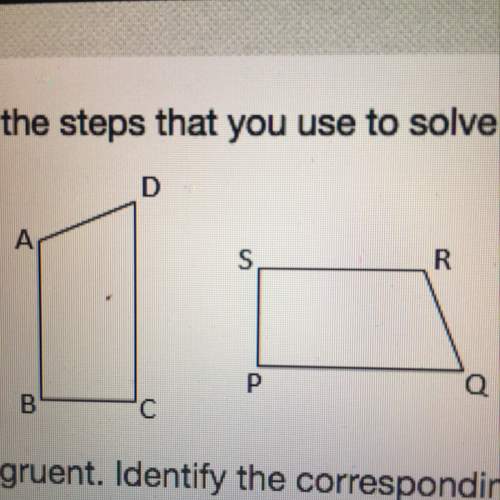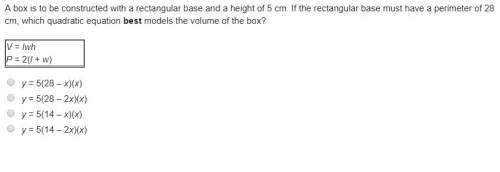
Mathematics, 15.06.2020 07:57 sustaitaj2022
Hui recorded the temperature at the same time each day for one month.
He found that the MAD for his data set was 4.3. What does this information tell you about the temperatures that Hui recorded?
Choose True or False for each statement.
The lowest temperature varied only 4.3 degrees from the mean temperature.
True/false
On most days the temperature varied about 4.3 degrees from the mean temperature.
Choose...
No temperature varied more than 4.3 degrees from the mean temperature.
Choose...
The highest temperature varied about 4.3 degrees from the lowest temperature.
Choose...

Answers: 1


Another question on Mathematics

Mathematics, 21.06.2019 14:10
Which linear equations have an infinite number of solutions? check all that apply. (x – 3/7) = 2/7(3/2x – 9/14)8(x + 2) = 5x – 1412.3x – 18 = 3(–6 + 4.1x)(6x + 10) = 7(x – 2)4.2x – 3.5 = 2.1 (5x + 8)
Answers: 3

Mathematics, 21.06.2019 20:30
Sketch the region enclosed by the given curves. decide whether to integrate with respect to x or y. draw a typical approximating rectangle and label its height and width. y= 5x, y=7x^2then find the area s of the region.
Answers: 3

Mathematics, 21.06.2019 21:00
How to write four times a number,minus 6,is equal to theee times the number+8 as an equqtion
Answers: 2

Mathematics, 21.06.2019 21:30
In a test for esp (extrasensory perception), the experimenter looks at cards that are hidden from the subject. each card contains either a star, a circle, a wave, a cross or a square.(five shapes) as the experimenter looks at each of 20 cards in turn, the subject names the shape on the card. when the esp study described above discovers a subject whose performance appears to be better than guessing, the study continues at greater length. the experimenter looks at many cards bearing one of five shapes (star, square, circle, wave, and cross) in an order determined by random numbers. the subject cannot see the experimenter as he looks at each card in turn, in order to avoid any possible nonverbal clues. the answers of a subject who does not have esp should be independent observations, each with probability 1/5 of success. we record 1000 attempts. which of the following assumptions must be met in order to solve this problem? it's reasonable to assume normality 0.8(1000), 0.2(1000)%30 approximately normal 0.8(1000), 0.2(1000)% 10 approximately normal srs it is reasonable to assume the total number of cards is over 10,000 it is reasonable to assume the total number of cards is over 1000
Answers: 1
You know the right answer?
Hui recorded the temperature at the same time each day for one month.
He found that the MAD for his...
Questions


English, 06.05.2020 00:21




Computers and Technology, 06.05.2020 00:21

English, 06.05.2020 00:21

History, 06.05.2020 00:21


Biology, 06.05.2020 00:21

History, 06.05.2020 00:21





Mathematics, 06.05.2020 00:21

Mathematics, 06.05.2020 00:21

Mathematics, 06.05.2020 00:21

Physics, 06.05.2020 00:21





